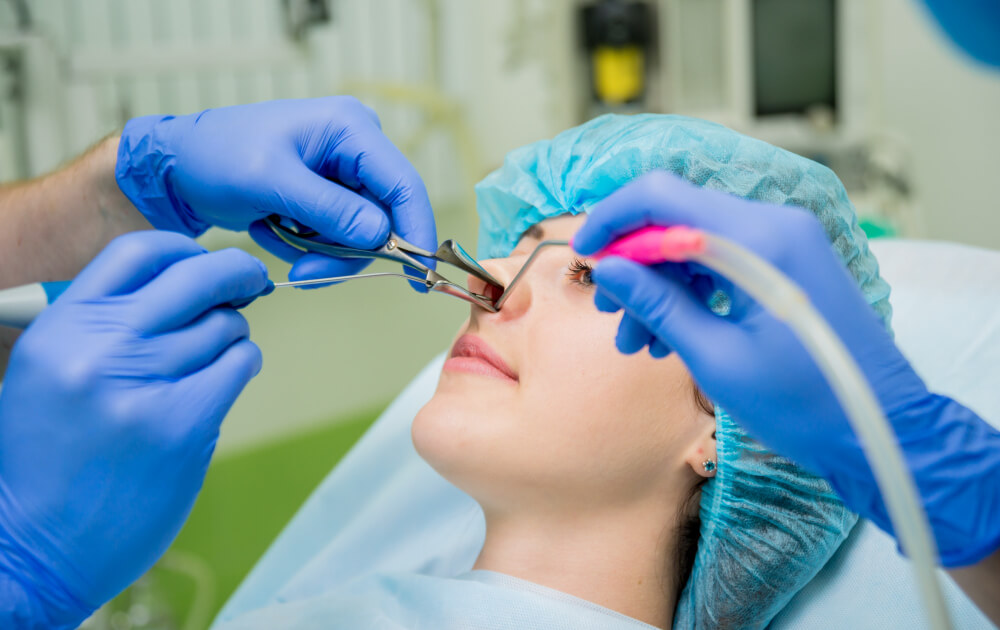Living with chronic sinus problems can be exhausting. The constant pressure, headaches, congestion, and recurring infections can significantly impact your quality of life. If you’ve tried multiple rounds of antibiotics and other conservative treatments without lasting relief, you might be wondering if balloon sinus surgery—also known as balloon sinuplasty—could be the solution you’ve been searching for. Today, Dr. Santos from our Seattle practice breaks down everything you need to know about this innovative procedure, including when it’s the best option and its potential benefits and limitations.
Understanding Balloon Sinuplasty: A Revolutionary Approach
Balloon sinuplasty is a minimally invasive way to treat chronic sinusitis. It uses a tiny balloon to widen your sinus cavity so it can drain better. Healthcare providers have used balloon sinuplasty since 2005. Unlike traditional sinus surgery that requires cutting and removing bone or tissue, this procedure gently restructures your sinus openings to restore natural drainage.
Dr. Santos explains that the procedure works similarly to angioplasty for heart patients. A thin tube with a light on the end called an endoscope is used to insert a catheter into your nostril. The catheter guides a small balloon into your sinuses. The balloon is inflated slowly to gently unblock your sinuses, then deflated and removed. The entire process preserves your natural anatomy while effectively addressing the root cause of your sinus problems.
When Is Balloon Sinuplasty the Best Option?
Ideal Candidates
According to Dr. Santos, not everyone with sinus problems is a candidate for balloon sinuplasty. Balloon sinus ostial dilation (BSD) has been found to be most effective in the treatment of recurrent acute sinusitis (RARS) and chronic rhinosinusitis without nasal polyposis (CRSsNP) that has been refractory to medical therapy.
You might be an excellent candidate if you:
- Have symptoms lasting more than 12 weeks
- Have already exhausted other medical management of chronic sinusitis options, like steroids and antibiotics, or if you have acute recurrent sinusitis at least three times a year
- Experience chronic sinus pressure, facial pain, and congestion
- Can tolerate the procedure under local anesthesia and have an affected area in specific sinuses, including those in the cheeks (maxillary sinuses), forehead (frontal sinuses) or back of the nose (sphenoid sinuses)
- Have CT scan evidence of sinus disease with primarily bony obstruction
Conditions That May Exclude You
Dr. Santos emphasizes that certain conditions may make traditional endoscopic sinus surgery a better choice:
- CRSwNP (chronic rhinosinusitis with nasal polyps) due to the device’s mechanism of action versus the pathophysiology of the disease. In CRSwNP, numerous polyps grow into and obstruct the nasal cavity and sinus ostia. The balloon does not alter or destroy the nasal mucosa and, therefore, would be unable to remove the polyp burden by itself.
- Severe polyposis, facial trauma, or a deviated septum may need other, more complex procedures
- Extensive ethmoid sinus disease (since these are multi-cell structures)
- Fungal sinusitis requiring tissue removal
The Pros of Balloon Sinuplasty: Why Patients Choose This Option
Minimally Invasive Nature
Balloon Sinuplasty is a minimally invasive office procedure. Unlike sinus medication, balloon sinuplasty gets to the root of the problem. It is designed to physically open the sinus cavity and clean out any infection. Dr. Santos highlights that this approach means no cutting of bone or tissue, resulting in less trauma to the surrounding structures.
Quick Recovery Time
One of the most significant advantages is the rapid recovery. You experience fast relief with this treatment. Generally, you can expect to get back to your normal daily routine within 24 hours. Patients can get back to work very quickly and typically return to normal activity in 24 – 48 hours.
Office-Based Procedure
The treatment has become increasingly popular, as providers can perform the procedure at medical offices as well as in hospitals. You can get balloon sinuplasty in a hospital operating room or a medical office. This convenience factor means no hospital stays and reduced overall costs.
High Success Rate
According to clinical research, the balloon sinuplasty success rate is greater than 95%. Many patients report lasting benefits, with improvements seen for up to two years or more after the procedure.
Preserved Future Options
ENT doctors may use Balloon Sinuplasty with other medical therapies, and it does not limit future treatment options for patients. This means if additional treatment is needed later, all options remain available.
The Cons and Potential Risks: What to Consider
Limited Scope of Treatment
Dr. Santos explains that balloon sinuplasty has limitations. BSD merely dilates blocked sinusal ostia without removing tissue, it is typically restricted to addressing disorder involving the frontal, sphenoid, and maxillary sinuses. This means it cannot address all types of sinus disease.
Not Suitable for All Conditions
As mentioned earlier, patients with nasal polyps, severe structural abnormalities, or extensive disease may not benefit from this procedure alone. Patients with severe sinus disease such as nasal polyps or fungal sinusitis will often require the more traditional endoscopic techniques to remove disease.
Potential Complications
While rare, Dr. Santos notes that complications can occur. Balloon sinuplasty has a low complication rate, though risks like bleeding, infection, and tissue injury still exist. There are some associated risks, including tissue and mucosal trauma, infection, or possible optic injury.
Reoperation Possibility
Of all patients undergoing frontal sinus balloon sinuplasty, 15.7% underwent a reoperation. In the balloon only group, the reoperation rate was 26.8%, whereas it was 10.7% in the hybrid group. While most patients experience long-lasting relief, some may require additional procedures.
The Procedure Experience: What to Expect
Dr. Santos walks patients through the typical experience:
Before the Procedure
Before you have balloon sinuplasty, your healthcare provider will use computed tomography (CT) scans to confirm balloon sinuplasty is an appropriate treatment for your condition. A thorough evaluation ensures you’re a good candidate.
During the Procedure
The procedure typically takes less than an hour. You’ll receive general anesthesia or be under conscious sedation. Conscious sedation blocks pain but allows you to stay awake during the procedure. Local anesthetic is applied, and the balloon catheter system is carefully guided to the blocked sinus openings.
After the Procedure
Following balloon sinuplasty, you can expect mild discomfort in the nose and nasal area, which generally can be treated with over-the-counter medication. You may also experience nasal drainage that might be discolored or might contain a little blood. If patients use a sinus rinse after the procedure (usually starting 2-3 days post-op), they can help wash out any bacteria and avoid infection.
Comparing Balloon Sinuplasty to Traditional Sinus Surgery
Dr. Santos often helps patients understand the key differences:
Traditional sinus surgery is known as endoscopic sinus surgery. This invasive procedure is typically done in a hospital or outpatient facility under general anesthesia. Sinus surgery involves cutting to remove tissue and bone and often requires an extended recovery period that may last for weeks or months. Sinus surgery is irreversible and there are higher risks for surgical complications.
In contrast, balloon sinuplasty offers:
- Minimal tissue trauma
- Faster recovery
- Lower complication rates
- Preservation of natural anatomy
- Potential for office-based treatment
Insurance Coverage and Cost Considerations
Good news for patients considering this procedure: Since its ground-breaking introduction in 2005, insurance companies have discovered significant balloon sinuplasty cost benefits. Most insurance companies and Medicare will cover sinuplasty when it is considered medically necessary and reasonable. Medicare covers Balloon Sinuplasty both in the office and hospital settings.
Dr. Santos recommends checking with your specific insurance provider to understand your coverage and potential out-of-pocket costs.
Making the Right Decision for Your Sinus Health
The choice between balloon sinuplasty and ESS ultimately depends on the severity of your chronic sinusitis and your individual circumstances. Dr. Santos emphasizes that a thorough evaluation is essential to determine the best approach for each patient.
During your consultation at our Seattle practice, we’ll:
- Review your complete medical history
- Evaluate your symptoms and their impact on daily life
- Examine your CT scan results
- Discuss all available treatment options
- Create a personalized treatment plan
The Bottom Line: Is Balloon Sinuplasty Right for You?
The technological innovation of Balloon Sinuplasty represents the emergence of an exciting era in Rhinology, focused on the concept of minimally invasive sinus surgery. This new technology has evolved as an effective way of opening up blocked sinus ostia to restore normal, physiological sinus drainage & ventilation.
For many patients suffering from chronic sinusitis in the Seattle area, balloon sinuplasty offers a promising solution that bridges the gap between medical management and traditional surgery. The procedure’s high success rate, minimal invasiveness, and quick recovery time make it an attractive option for appropriate candidates.
However, Dr. Santos stresses that patient selection is crucial. Careful case evaluation & selection remains paramount in providing the best outcomes with this technique. Not every patient will be a candidate, and some may achieve better results with traditional endoscopic sinus surgery or a combination approach.
If you’re tired of living with chronic sinus problems and wondering whether balloon sinuplasty could help, we encourage you to schedule a consultation with Dr. Santos at our Seattle practice. Together, we can evaluate your specific situation and determine whether this innovative procedure is your best path to lasting sinus relief. Don’t let sinus problems continue to impact your quality of life—explore your options and take the first step toward breathing freely again.


